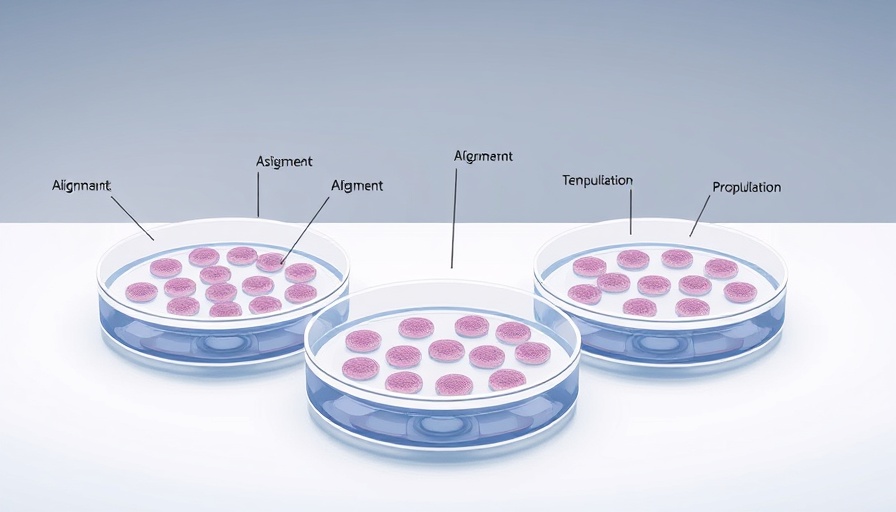
Unveiling the Future of Tissue Repair with Stem Cell Technology
In recent years, scientists have made incredible advancements in stem cell therapy, pushing the boundaries of what is possible in regenerative medicine. A latest breakthrough from researchers at Hiroshima University reveals a novel technique for aligning stem cells into sheets, significantly boosting the production of key proteins that regulate tissue repair and immune responses. This innovative method offers new hope for treating chronic conditions such as heart disease, liver damage, and autoimmune disorders.
The Science Behind Stem Cell Sheets
The creation of aligned mesenchymal stem cell sheets involves an intriguing process. Researchers employed a uniquely designed culture surface that reacts to temperature, featuring striped patterns that direct stem cells into parallel formations—much like how cells are organized in naturally occurring tissues like skin and muscle. This structural guidance enhances cellular communication and functionality, unlocking the cells' collaborative potential.
“Mesenchymal stem cell sheets are garnering interest as a powerful regenerative medicine tool,” explains Kenichi Nagase, the study's lead author. “By refining how these cells operate, we can enhance their therapeutic effectiveness.” In this study, a notable increase in cytokine secretion was observed when cells were cultured on these striped surfaces, underscoring the relationship between cellular arrangement and protein production, particularly in healing factors crucial for tissue regeneration.
The Advantages of Aligned Stem Cell Sheets
One compelling advantage of using these aligned sheets is their durability and capacity for lasting impact. When stem cells are delivered as individual units, they tend to disperse unpredictably within the body, often failing to localize where healing is needed most. In contrast, stem cell sheets maintain cell-to-cell contact and preserve the extracellular matrix, enabling more effective deployment directly to damaged tissues.
This method not only improves the delivery mechanism but also helps maintain the intrinsic properties of mesenchymal stem cells, allowing them to differentiate into various cell types as needed, thus enhancing their therapeutic versatility.
Looking Ahead: Potential Applications
The implications of this technology are profound. By facilitating better communication among stem cells, aligned sheets could lead to faster and more efficient tissue repair. Future research may explore their application in sports injuries, age-related conditions, and beyond—potentially revolutionizing how we approach chronic disease management.
Why This Matters for Health and Wellness
For those curious about the future of health and wellness, understanding stem cell technology is crucial. It's about more than just science; it intertwines with our desire for effective treatments and improved quality of life. As these innovations continue to unfold, they may well pave the way for therapies that foster healing in unprecedented ways.
Ultimately, staying informed about breakthroughs in biotechnology can empower individuals to make conscious health decisions and foster their well-being. It’s an exciting time in the world of health science, and laying the groundwork for future advancements starts with the knowledge we acquire today.
 Add Row
Add Row  Add
Add 




Write A Comment